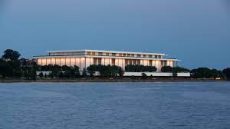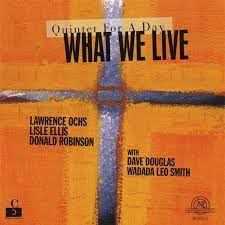
Daily Dose Of Jazz…
Julian Fuhs was born on November 20, 1891 in Berlin, Germany. After attending the Stern Conservatory he emigrated to the United States in 1910 and got his American citizenship in 1916. Returning to Berlin in 1924 he put together his Follies Band, whose American-influenced jazz and light music was extremely successful.
He made a significant contribution to the establishment of jazz in Germany in the 1920s. Fuhs was the first to use a three-part saxophone section and was considered the German counterpart to Paul Whiteman after his recording of George Gershwin ‘s Rhapsody in Blue. Fuhs was the first to record it in Europe.
In 1931, as a result of the global economic crisis, he was forced to disband his orchestra and earn his living as the owner of a bar. In 1933 he was repeatedly the victim of violent attacks because of his Jewish origins. He emigrated first to Austria, then to Czechoslovakia and France. In 1937 he returned to America, where he worked as a salesman.
Pianist and bandleader Julian Fuhs transitioned in poverty on February 4, 1975 in Miami, Florida.
More Posts: bandleader,history,instrumental,jazz,music,piano

Daily Dose Of Jazz…
Thomas Francis Dorsey Jr. was born November 19, 1905 in Mahanoy Plane, Pennsylvania, the second of four children born to bandleader Thomas Francis Dorsey Sr. He studied the trumpet with his father but later switched to trombone. At age 15, Jimmy recommended him to replace Russ Morgan in the Scranton Sirens, a territory band in the 1920s. He worked in bands led by Tal Henry, Rudy Vallee, Vincent Lopez, and Nathaniel Shilkret. In 1923 he went to Detroit to play in Jean Goldkette’s band but returned to New York in 1925 to play with the California Ramblers. Two years later he joined Paul Whiteman, then in 1929, the Dorsey Brothers had their first hit with Coquette for OKeh Records.
In 1934, as the Dorsey Brothers, the band signed with Decca, having a hit with I Believe in Miracles. However, acrimony between the brothers led to Tommy walking out and forming his own band in 1935 and having a hit with Every Little Moment. His orchestra rendered ballads at dance tempos and frequently featured singers Jack Leonard and Frank Sinatra. The band was popular almost from the moment it signed with RCA Victor for “On Treasure Island”, the first of four hits in 1935.
He would go on to have a Dixieland group called Clambake Seven, co-host The Raleigh-Kool Program on the radio and hire arranger Sy Oliver away from Jimmie Lunceford to put more jazz into his pop music. Hiring Sinatra from Harry James helped people the singer to fame and learned breath control from the trombonist. Dorsey’s staff of arrangers included Axel Stordahl, Nelson Riddle, Paul Weston, and Bill Finegan.
Throughout the course of the bands life Bunny Berigan, Doc Severinsen, and Charlie Shavers, Buddy DeFranco, Peanuts Hucko, Buddy Rich, Louie Bellson, Dave Tough, Edythe Wright, Jo Stafford with the Pied Pipers, Gene Krupa, Dick Haymes, Connie Haines, and The Clark Sisters all worked with Tommy.
Dorsey owned two music publishing companies, a ballroom, trade magazine, sponsored other bands, and disbanded the orchestra afte World War II. Teaming up with his brother once more, the took the unit on tour and onto their own television show, Stage Show, from 1954 to 1956. In January 1956, they made rock music history introducing Elvis Presley on his national television debut. Tommy Dorsey, who had a run of 286 Billboard chart hits, of which were seventeen number-one hits with his orchestra transitioned on November 26, 1956 at his home in Greenwich, Connecticut, a week after his 51st birthday. He had begun taking sleeping pills regularly at this time, causing him to become heavily sedated; he choked to death in his sleep after having eaten a large meal.
More Posts: bandleader,history,instrumental,jazz,music,trombone

Daily Dose Of Jazz…
Eddie Graham was born on November 18, 1937 in New York City. Inspired by his father who played the trombone, he acquired an early interest in rhythm which prompted him to begin the study of drums at age nine. After moving with his family from New York to Miami, Florida at 14, he had a continuing television series on WTVJ with his Swing Kings. During this time his interest in Dixieland jazz was fostered by an acquaintance with drummer “Preacher” Rollo Laylan who frequently imported jazz names to Miami.
Attending the University of Miami he performed for several seasons with the Miami Symphony before migrating to California to accompany such diverse luminaries as Jack Jones, Elvis Presley, and Anita O’Day. He toured as accompanist and conductor for Roberta Sherwood, Vic Dana and Kay Stevens during the Sixties. Eddie settled in Las Vegas, Nevada on a long term contract with Latin concert pianist, Esquivel. He toured Japan with the Village Stompers, and appeared on television with ragtime pianist Big Tiny Little. As a percussionist in the Vegas showrooms, he accompanied Rich Little, Sammy Davis Jr., Presley, Johnny Mathis, and Mack Davis, while hitting the stage with his own jazz group.
The early seventies saw him in Hawaii with trombonist Trummy Young and then hooked up with Earl “Fatha” Hines as a featured artist from 1975 to 1980. On concert tours in Europe, Australia, South America and Japan, Ed has appeared with such artists as Benny Carter, Joe Venuti, Bobby Hackett, Red Norvo, Dorothy Donegan, Barney Bigard, and Stan Getz.
Graham went on to record two albums as a leader, one studio and one live, Hot Stix and S’Wonderful Jazz, respectively. He recorded with Earl Hines on Tony Bennet’s Improv record label, with Marva Josie and a collaboration with trumpeter Billy Butterfield.
In the 80’s, he was a musical director and featured soloist in Las Vegas, and a member of the Peanuts Hucko Quartet in Palm Springs, Califonia. He [layed numerous festivals and clubs around the country during this period, and was a founding member of the 21 piece Monterey Peninsula Jazz Orchestra as percussionist and soloist at Clint Eastwood’s Mission Ranch in Carmel. At eighty-five drummer Eddie Graham still occasionally plays.
More Posts: bandleader,drums,history,instrumental,jazz,music,percussion

The Jazz Voyager
The friendly skies are seeing me once more flying cross country to our nation’s capital to capture the essence of what I believe will be an unforgettable experience at the Kennedy Center Terrace Theater. I will continue to mask up whenever I’m on a plane or in enclosed spaces because these variants are not yet inert. Autumn in Washington, DC is a special time of year and to witness the collaboration of Javon Jackson and Nikki Giovanni will be transcendent.
Jackson presents The Gospel According To Nikki Giovanni with appearances by Nnenna Freelon and a rare appearance by Giovanni herself. This is a one evening event, so if you’ve never seen these three performers, I suggest you get your tickets because you are in for a treat.
Hitting DC is always like coming home even though the landscape has changed quite a bit. I have to get my bearings each time years pass between visits but fortunately it doesn’t take long. The Kennedy Center is located at 2700 F Street, NW 20566. For more information visit notoriousjazz.com/event or kennedy-center.org. The Kennedy Center number is 202-467-4600.
More Posts: adventure,album,club,festival,genius,jazz,museum,music,preserving,restaurant,saxophone,travel,vocal

Daily Dose Of Jazz…
Lisle Ellis was born Lyle Steve Lansall on November 17, 1951 in Campbell River, British Columbia. and began playing electric bass in his teens and worked professionally from an early age in numerous environments including studios, radio & TV shows, and strip clubs. He studied at the Vancouver Academy of Music with Walter Robertson and attended Douglas College in Vancouver, Canada. He later studied at the Creative Music Studio in New York City from 1975-1979.
He moved to Toronto, Ontario, Canada where he resided from 1982 until 1983 and then went to Montreal, Quebec, Canada for nearly a decade until 1992. Lisle became the inaugural recipient of Canada’s Fred Stone Award in 1986, given annually to a musician for integrity and innovation. The Eighties saw him as a conspicuous activator of musician alliance organizations, performance venues, and concert series presentations in Vancouver and Montreal. One collective in particular, Vancouver’s New Orchestra Workshop, is still active nearly thirty years later.
After moving to the United States in 1992, he settled in San Francisco, California where he worked with Glenn Spearman for nine years. In 1994, he was a member of the Cecil Taylor band for a brief tour of California. He lived in San Diego, California from 2001–2005 and then crossed the country to New York City where he presently lives.
Since the late 1990s, he primarily focused on developing an electro-acoustic interface he calls “bass & circuitry”. By 2008 he turned his attention back to acoustic music projects with an emphasis on jazz based improvisation and to finding a balance between his electronic and acoustic music interests. Bassist and composer Lisle Ellis, who professionally has used both L. S. Ellis and L. S. Lansall-Ellis, and is known for his improvisational style and use of electronics, continues to explore the realm of jazz.
More Posts: bandleader,bass,history,instrumental,jazz,music



